EMIGRATION OF RAMATÍS (RAMAATÍS).
Nota: temos este texto também em português aqui no site.
“Eventualmente, publicaremos textos em outros idiomas para leitores de países que enfrentam restrições políticas e não têm acesso ao privilégio de tecnologias e/ou plugins que possibilitam a tradução em seus navegadores de internet.”
(…) “The synergies unfold into a poetic splendour as we explore the precepts and symbolism of secret societies, which poetically weave a mystical connection with this singular celestial body. This connection reveals itself especially when, oh reader, you raise your forehead, and your heart beats, chanting longing in front of the light that beckons us. Like a hopeful lighthouse, it guides us back to the safe home after the storm of the earthly ocean.” Fabiano de Cristo – FC♰
_____
Emigrated from one of the planetary systems of Sirius, the Spirit of Ramaatís initiates the process of “perispiritual metamorphosis” in our Solar System through the “vibratory descent” into the astral spheres of the council of the Planet Mars. Subsequently, undergoes a phase of “adaptation” of its perispirit, culminating in harmonization with the constituent elements of the chemistry and fluids present on planet Earth. The perispirit undergoes celestial modeling and adaptation under the Laws of the Universal Cosmic Fluid, conceived by Sidereal Sociologists.
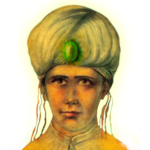
Complex projects of civilizational adaptability from other worlds to Earth are established. Each group of emigrants receives their respective reincarnatory plans through the great Architect Spirits. Multitudes of emigrated entities accept the challenges and inherent risks of each task and possible adversities in the world of atonement and trials. Subsequently, Divine Mentors organize the heterogeneous groups cohesively, prioritizing those with the “most delayed spirituality,” aiming for individual evolution.
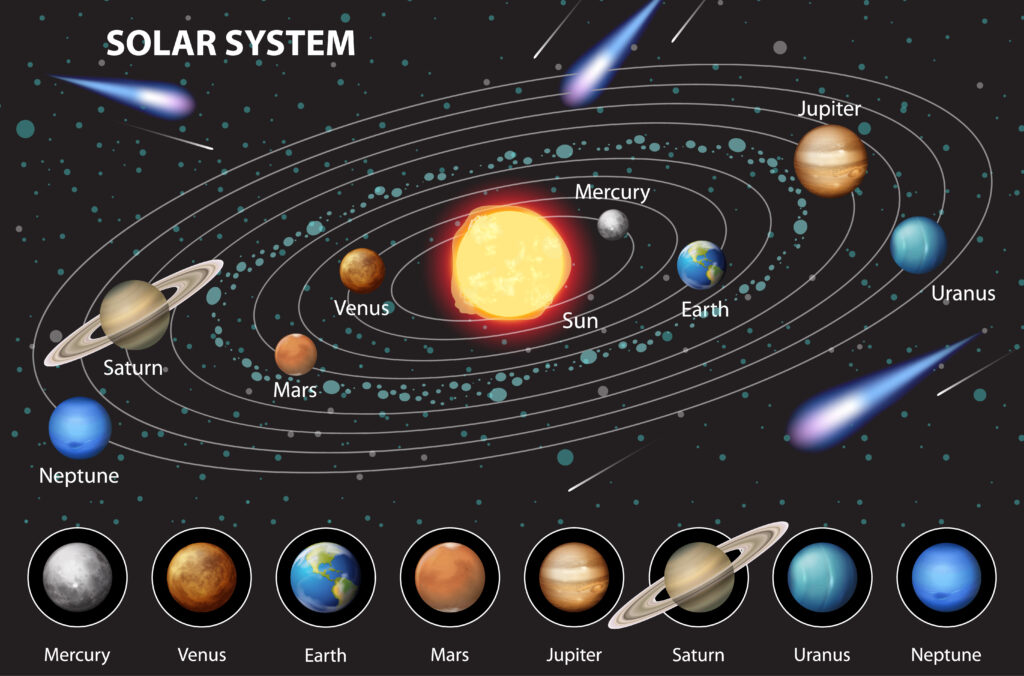
The family groupings of these spirits, in their evolutionary process within systems, are composed of entities originating from the same civilization as the triad of stars (Suns), whether or not linked to the entity Ramaatís or Ramatís (Sirius A, Sirius B, and Sirius C – the latter supposedly non-material or unidentified by modern astronomy). Each entity has specific authorizations to face the challenges and assume the responsibilities of the planet of their sidereal origins.
Relocated, these spirits leave the paradisiacal worlds of their origin in caravans, heading to the astral plane of the Solar System, including other planets within the system.
“Finally, one of the greatest collaborative projects for the regeneration of Earth was underway, under the guidance of the Sidereal Angels, with a highlight on JESUS! His welcoming and sidereal mantle extends throughout eternity…”
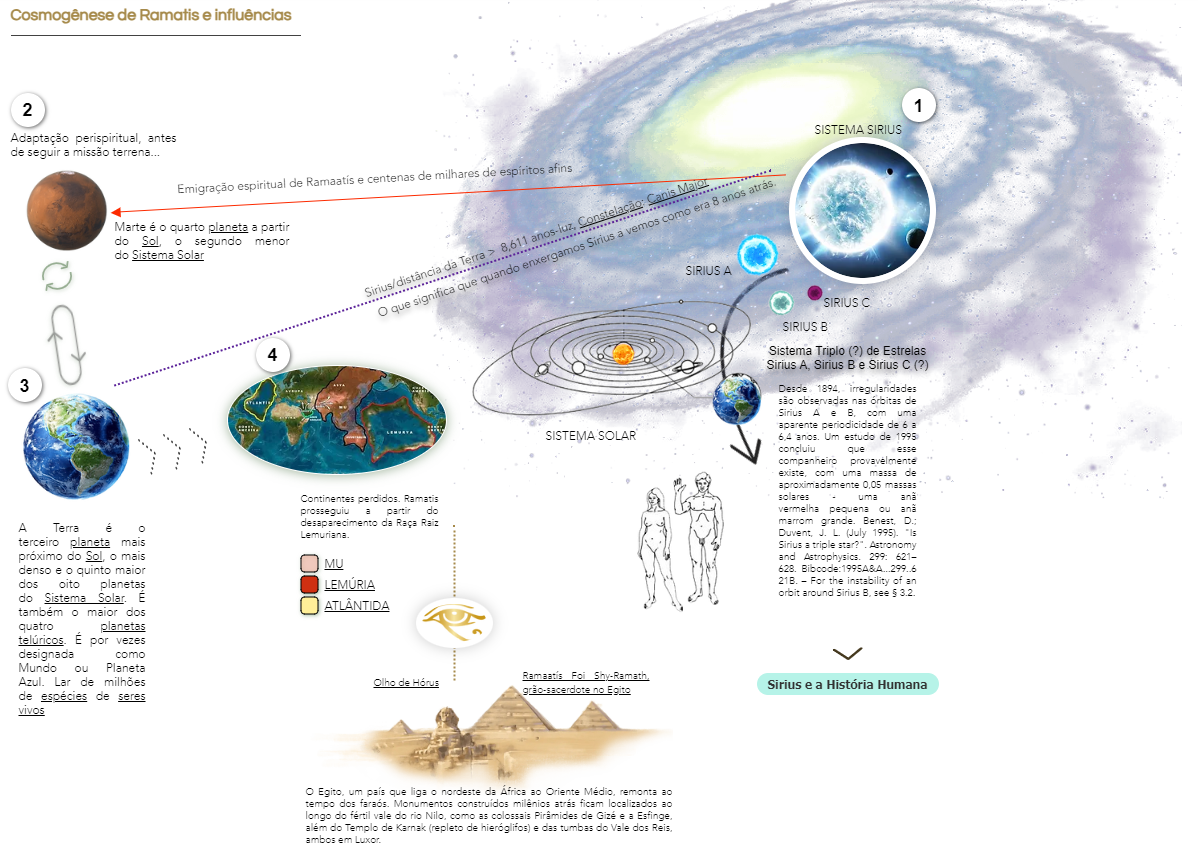
SIRIUS AND HUMAN HISTORY
“Since ancient times and in various civilizations, Sirius, the Dog Star, has been shrouded in mysterious wisdom. The esoteric teachings of all ages consistently bestowed upon Sirius a special status; the significance of the star in occult symbolism is a confirmation of this fact.”

What makes Sirius so special? Is it simply because it’s the brightest star in the sky? Or is it also because of an ancient and mysterious connection with humanity? This article explores the significance of Sirius in secret societies and history, as well as describing the symbolism surrounding it.


As larger and more powerful telescopes explore the Sirius system, they may be able to validate another Dogon legend of a third star – Sirius C. According to the Dogon legend, the Nommos inhabited a small planet orbiting the supposed “Sirius C,” a planet that was perishing for unknown reasons, prompting the Nommos to seek habitation elsewhere.
Most scientists do not consider any part of the Sirius system a prime candidate for life. However, in 1995, gravitational studies indicated the possible presence of a brown dwarf star orbiting Sirius (Sirius C) with an orbital period of six years. There is still much to learn.
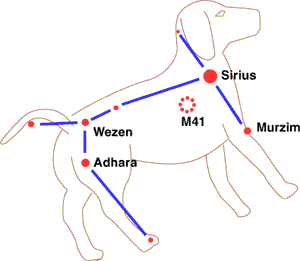
Sirius is situated in the constellation Canis Major – also known as the “Big Dog” – hence called the “Dog Star.” It is more than twenty times brighter than the Sun and has twice its mass. At night, Sirius is the brightest star in the sky, and its blue-white brilliance has never ceased to amaze star observers since time immemorial. It is not surprising that Sirius has been revered by virtually every civilization.
BUT IS THERE MORE TO SIRIUS THAN MEETS THE EYE?
Artifacts from ancient civilizations reveal that Sirius held great importance in mythology, astronomy, and occultism. Mystery Schools consider it as the “sun behind the sun” and, therefore, the true source of power for our sun. If the heat of our sun remains alive in the physical world, Sirius is seen as keeping the spiritual world alive. It is the “true light” shining in the East, the spiritual light, just as the sun illuminates the physical world, considered a great illusion.
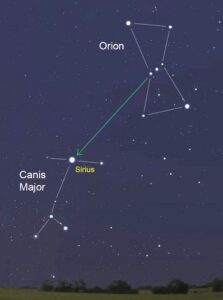
Associating Sirius with the divine and even considering it as the abode of humanity’s “great masters” is not just embedded in the mythology of some primitive civilizations; it is a widespread belief that has survived (and intensified) to the present day. Let’s explore the importance of Sirius in ancient times, analyze its significance in secret societies, and examine how these esoteric concepts are translated into popular culture.
IN ANCIENT CIVILIZATIONS:
In ancient Egypt, Sirius was considered the most important star in the sky, being astronomically fundamental to the Egyptian religious system. It was revered as Sothis and associated with Isis, the mother goddess of Egyptian mythology, forming a trinity with Osiris and Horus, the son.

The ancient Egyptians attributed a high status to Sirius, somehow associating it with many of their deities. Anubis, the god of death with a dog head, had an obvious connection to the Dog Star, and Thoth-Hermes, considered the great master of humanity, was also esoterically related to the star.
The Egyptian calendar was based on the heliacal rising of Sirius, occurring just before the annual flooding of the Nile in summer. The celestial movement of Sirius was observed and revered by various ancient civilizations, such as the Greeks, Sumerians, and Babylonians. The star was considered sacred, marking the arrival of the hot and dry days of July and August, giving rise to the popular expression “dog days of summer.”
Some occult scholars claim that the Great Pyramid of Giza was built in perfect alignment with the stars, especially Sirius. The light from these stars would have been used in ceremonies of the Egyptian Mysteries.
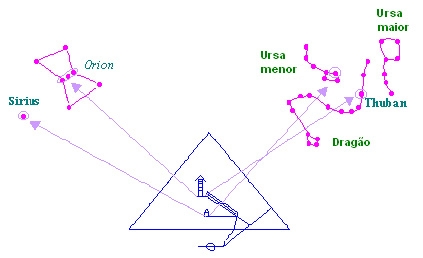
Recent scientific discoveries about the Great Pyramid and the mysterious “air shafts” reinforce the importance of “Sirius within the pyramid.”
One fascinating aspect of Sirius is the consistency of the symbolism and meanings associated with it. Various great civilizations associated it with a canine figure and saw the star as the origin or destination of a mysterious force. In Chinese and Japanese astronomy, Sirius is known as the “celestial wolf star.” Native tribes in North America also referred to the star in a canine manner, such as the Seri and Tohono O’odham tribes, who described it as a “dog following sheep on the mountain,” and the Blackfoot, who called it “dog-face.” The Cherokee paired it with Antares as a guardian star of the “Path of Souls,” while the Inuit of Alaska’s Bering Strait referred to it as the “Moon Dog.”
I recommend reading the article “The Egyptian Origins of Planetary Hypsomata,” translated by César Augusto — Astrologer, in memory of Dr. Jorge Roberto Ogden Aquino. The article was published in DISCUSSIONS IN EGYPTOLOGY 64 (2006-2009) — ISSN 0268-3083 and is available at [https://espacoastrologico.com.br/2018/06/05/as-origens-egipcias-da-hypsomata-planetaria/].
THE DOGON TRIBE AND THE LEGEND OF ATLANTIS
In 1971, American author Robert K. G. Temple released a controversial book titled “The Sirius Mystery.” In it, Temple argued that the Dogon, an ancient tribe from Mali, possessed detailed knowledge about Sirius that would only be accessible with the use of telescopes. According to him, the Dogon understood the binary nature of Sirius, composed of two stars called Sirius A and Sirius B. This discovery led Temple to believe that the Dogon had “direct” connections with beings from Sirius. Despite criticisms, many secret societies and belief systems teach about a mystical connection between Sirius and humanity.
In Dogon mythology, the origin of humanity is associated with the Nommo, an amphibious race that inhabited a planet orbiting Sirius. The Dogon believe that the Nommo descended from the sky in a spacecraft surrounded by fire and thunder, bringing profound knowledge to human beings. Temple theorized that the Nommo were extraterrestrial inhabitants of Sirius who travelled to Earth in the distant past to teach ancient civilizations, such as the Egyptians and Dogon, about the Sirius star system and our solar system. These civilizations recorded the teachings of the Nommo in their religions, making them central to their mysteries.
The Dogon myth resembles that of other civilizations, such as the Sumerians, Egyptians, Israelites, and Babylonians, which include the archetype of a “great master from above.” Depending on the civilization, this master is known as Enoch, Thoth, or Hermes Trismegistus, believed to have taught theurgical sciences to humanity.
In occult traditions, Thoth-Hermes is considered the instructor of Atlantis, which, according to legend, was the most advanced civilization before being submerged by the Great Flood.
The religious, philosophical, and scientific wisdom of Atlantis, according to some, was transmitted to other civilizations by surviving Atlanteans. These survivors, when settling in Egypt, became the first “divine” rulers. Atlantean influence persisted, giving rise to cosmological myths in sacred books around the world. Thoth-Hermes Trismegistus, associated with Nommo, is considered the originator of Sirius, linked to the Egyptian mythology of the dog star.
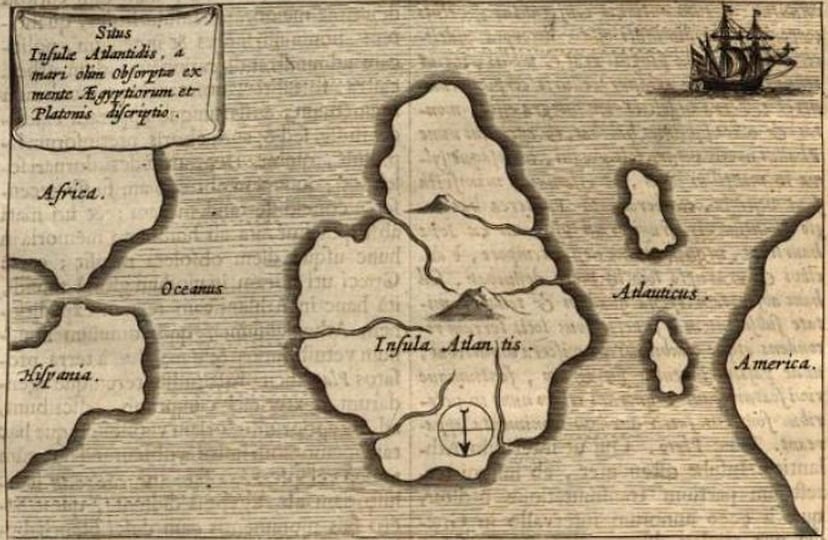
This way, the knowledge transmitted by surviving Atlanteans, such as Thoth-Hermes, contributed to the foundation of various beliefs and mythologies around the world, creating a mystical connection between Sirius, the Atlanteans, and the spiritual evolution of humanity.
More detailed information supported by scientific studies can be found in Dr. Kathy Forti’s article.
(https://trinfinity8.com/african-dogon-tribe-reveals-mans-true-origins/). Kathy is a renowned clinical psychologist, the creator of the “Trinfinity8” technology, and the author of the book “Fractals of God: A Psychologist’s Near-Death Experience and Journeys Into the Mystical.”
HELENA BLAVATSKY AND ROBERT TEMPLE

Helena Blavatsky, in Theosophical Glossary, mentions the trismegistic treatise “The Virgin of the World” from Egypt, which refers to the “Black Rite” linked to the “black Osiris” as the highest degree of secret initiation in ancient Egyptian religion. The treatise states that Hermes came to Earth to teach civilization to humans and then departed for the stars (Sirius), abandoning the Egyptian mysteries.
SIRIUS IN OCCULT SYMBOLISM AND SECRET SOCIETIES
Sirius plays a significant role in various secret societies, including Freemasonry. In Freemasonry, Sirius is known as the “Blazing Star” and is considered the central focus of teachings. The Blazing Star, representing Sirius, is a symbol of divinity, omnipresence, and omniscience, signifying the Masonic journey toward perfection.
TAROT
The seventeenth major numbered trump in the Tarot is called Les Étoiles (in French, the Star). It depicts a kneeling young woman, with one foot in the water, suggesting the shape of a swastika in her body. The figure holds two urns, pouring their contents onto the earth and sea. Above the figure’s head, eight stars stand out, one exceptionally large and bright. According to the interpretation of Count de Gébelin, the larger star symbolizes Sothis or Sirius, while the other seven represent the sacred planets of antiquity. The image of Isis causing the flooding of the Nile, synchronized with the rise of Sirius, is associated with nature renewing its vitality after the waters release the germ of life. For further details, refer to the conclusion of this article.
MAÇONARIA
In Freemasonry, the constellation of Sirius is revered as the “Blazing Star,” and a brief contemplation of its prominence in Masonic symbolism reveals the magnitude of its importance. The venerable Freemason William Hutchinson, in his words, extols Sirius as “the primary object that demands our attention in the Lodge.” Just as the light of Sirius permeated the Great Pyramid during initiation rituals, it symbolically assumes a significant presence in Masonic Lodges.
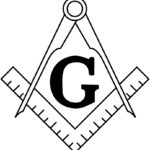
The renowned Albert Pike, in his work “Morals and Dogma,” proclaims: “The ancient astronomers saw all the great symbols of Masonry in the Stars. Sirius shines in our Lodges as the Blazing Star.”
This title, the Blazing Star, illuminates the members of Masonic Lodges, initially personifying SIRIUS, the dog star, precursor of the Nile flood, and the god Anubis, associated with ISIS in her quest for the body of Osiris. Transforming into the image of Horus, son of Osiris and symbolized by the Sun, god of the seasons, lord of Time, and son of Isis, who personifies universal nature, primitive matter, an inexhaustible source of Life, and sparks of the uncreated fire, universal seed of all beings. Hermes, known as the Master of Learning, whose Greek name is the god Mercury, is also intertwined in this cosmic weave.
In Masonry, the Blazing Star is taught as a symbol of divinity, omnipresence (the Creator is present everywhere), and omniscience (the Creator sees and knows everything). Sirius, the “sacred abode” to which all Masons aspire, is conceived as the source of divine power and the destiny of divine souls. This concept reverberates in Masonic artistic representations.
To attain perfection, the initiate must understand and internalize the duality of the world (good and evil, masculine and feminine, black and white, etc.) through an alchemical metamorphosis. This concept is symbolically represented by the union of Osiris and Isis, masculine and feminine principles, generating Horus, the Star Child, the personification of Masonic perfection, equated with the Blazing Star.
THE SUN AND THE MOON
“The sun and the moon… represent the two great principles… the masculine and the feminine… both shedding their light upon their offspring, the blazing star, or Horus,” Pike states. The Egyptian hieroglyph that esoterically represents Sirius is interpreted as a representation of the cosmic trinity. This fundamental concept for Masons has transcended into some of the world’s most notable structures. The Washington Monument, an Egyptian obelisk embodying the masculine principle, is interconnected with the Capitol dome, symbolizing the feminine principle. Together, they emit the invisible energy of Horus, represented by Sirius, as asserted by Albert Pike.
THE ALL-SEEING EYE WITHIN THE BLAZING STAR IN MASONIC ART.
The Eye of Horus, often depicted surrounded by the brilliance of Sirius, is an essential Masonic symbol. This symbolism is so intrinsic that even the All-Seeing Eye on the U.S. dollar bill is depicted shining not by sunlight but by the radiance of Sirius. The Great Pyramid of Giza, aligned with Sirius, is honoured above the pyramid on the dollar bill, attesting to Sirius’s radiance in the pockets of millions of citizens.
The Order of the Eastern Star, considered the “female version” of Masonry, makes direct reference to Sirius as the “Eastern Star in Ascension.” While the official explanation ties the Order’s name to the Three Wise Men, the symbolism reveals the influence of Sirius, the most revered star in Masonry.
ALICE BAILEY, MADAME BLAVATSKY, AND THEOSOPHY

Alice was born in England in 1880.
Alice Bailey e Madame Blavatsky, proeminentes na Teosofia, reconhecem Sirius como fonte de energia esotérica. Blavatsky enfatiza sua influência mística, conectando-a às grandes religiões antigas. Alice Bailey a considera a “Grande Loja Branca” e a “estrela de início”, casa da “Hierarquia Espiritual”.
ALEISTER CROWLEY, A.A. E KENNETH GRANT…
Aleister Crowley, founder of the occult order A∴A∴, whose name means “The Order of the Silver Star,” references Sirius in a veiled manner. Crowley, influential from his early Masonic years to leading the OTO, is widely accepted as having channelled his work “Liber AL: The Book of the Law” through his connection with Sirius.
His writings are permeated with coded references to Sirius. His disciple, Kenneth Grant, extensively expounded on the dog star as a magical magnetic centre. Grant believes in the “Sirius/Set current,” an extraterrestrial dimension connecting Sirius, Earth, and Set, the Egyptian god of Chaos, later associated with Satan.
In summary, each occult philosophy describes Sirius uniquely but maintains a constancy: Sirius is the “sun behind the sun,” the hidden source of power. Recognized as the cradle of human knowledge, the mystical connection between Sirius and Earth remains current.
The cult of Sirius is not a relic of the past; it pulsates vigorously in contemporary times. Examining our culture imbued with occult symbolism, we find numerous references to Sirius.
DISNEY’S PINOCCHIO
Direct or coded references to Sirius in popular culture are abundant and prominently featured in significant films. Pinocchio, based on Carlo Collodi’s work, brings the Blue Fairy descending from the sky, whose blue light is an allusion to Sirius, to give life to Pinocchio. The film’s theme song is an emotional inspiration for Sirius.
THE MELODY THAT PERMEATES THE SOUNDTRACK OF PINOCCHIO ALSO ECHOES AS AN EVOCATION OF NOSTALGIA LINKED TO SIRIUS. Composition: Leigh Harline and Ned Washington.
When You Wish Upon a Star
When you wish upon a star
Makes no difference who you are
Anything your heart desires
Will come to youIf your heart is in your dream
No request is too extreme
When you wish upon a star
As dreamers doFate is kind
She brings to those who love
The sweet fulfillment of
Their secret longingLike a bolt out of the blue
Fate steps in and sees you through
When you wish upon a star
Your dreams come true.
THE TRUMAN SHOW
The Truman Show, portraying a spotlight named Sirius, simulates the light of a star in an illusory world. This encounter with Sirius instigates Truman’s quest for truth, representing Sirius as the “star of initiation” that awakens consciousness.
THE DOGONS AND THE STAR SIRIUS
The Dogon people, inhabitants of Mali, possess remarkably accurate knowledge about the Sirius star system, including its orbital periods. Sirius, the most notable star in the constellation Canis Major, shines as the brightest seen from Earth, located only 8.6 light-years from our solar system.
This star was recognized by ancient Egyptian astronomers, along with its smaller companion, Sirius B. Interestingly, Sirius B, a star classified as a “white dwarf,” was only identified by Western astronomers in more recent times, first confirmed by F.W. Bessel in 1844 in Konigsberg, Germany.
The Dogon tribe, consisting of about 200,000 people and located in a remote region of inland East Africa, primarily lives in villages on the cliffs of Bandiagara, east of the Niger River. Despite their relatively small population, their complex lifestyle doesn’t allow them to be classified as “primitive.”
The Dogons possess extraordinarily precise knowledge about the Sirius star system and its orbital periods. Dogon priests claim to hold these details, transmitted orally and in secret, for centuries before confirmation by astronomers.
For the Dogons, all creation is intrinsically linked to the star they call Po Tolo, meaning “seed star.” This term derives from the tiny seed known as Fonio, botanically identified as Digitaria exilis. Through this minuscule seed, the Dogons symbolize the beginning of all things. According to their accounts, creation began on this star, qualified by astronomy as a “white dwarf,” currently designated by modern astronomers as Sirius B, the less luminous companion of Sirius A in the Canis Major constellation.
Before we proceed, I want to share some curiosities about creation, as we are delving into this context.
From the cosmic seed, the cosmic egg will be generated by expansion, from which all creation/manifestation will explode, a concept present in many cultures that prevents even a summary comparison when extrapolating the limits of this writing. Despite this, we cannot help but highlight it as a more accurate translation of the Genesis passage related to the theme that affirms ‘the spirit of God brooding over the waters.’
We take the liberty of noting, with a small strategic step back, that none of the researchers drew a parallel between this seed and the biblical story of the mustard seed, a fact that interests us more from a ‘traditional’ function perspective, and the step is this:
“The kingdom of heaven can be compared to a mustard seed that a man takes and sows in his field. It is the smallest of all seeds, but when it has grown, it is larger than the other garden plants and becomes a tree, so that the birds of the sky come and nest in its branches”. — Matthew 13:31-32.
Likewise, no one proposed a comparison with Hinduism, where the similarity of this concept—smaller yet greater—is unequivocally expressed in these words:
“This atma, the divine spirit residing in the heart, is smaller than a grain of rice, smaller than a grain of barley, smaller than a mustard seed, smaller than a grain of corn, smaller than the germ, than a grain of corn; yet this atma residing in the heart is even greater than the earth, greater than the atmosphere, greater than the sky, greater than all worlds.” — Chândogya Upanishad, 3rd Prapâthaka, 14th Khanda, shruti 3.
The Dogons describe the shared orbits of “Sirius A” and “Sirius B” as forming an ellipse, with Sirius A positioned at one of the foci. This conception, which Western astronomy only incorporated in the early 17th century with Johannes Kepler’s proposal on celestial movements in elliptical orbits, highlights the precision of Dogon knowledge.

The Dogon’s knowledge further extends to stating that Sirius B takes 50 years to complete an orbit around Sirius A, information corroborated by modern astronomy, establishing the orbital period at 50.4 years.
Truly remarkable is the knowledge the Dogon claims to possess about a third celestial body in the Sirius system, “Sirius C,” not yet identified by astronomers. Referred to by the Dogon as Emme Ya or “Sorghum Woman,” they describe it as a small star with only one orbiting planet, or a large planet with a large moon.
We reproduce, for its relevance, the temple or sanctuary that, with expressive eloquence, ethnologist Ferdinando Fagnola described in his book “Viagem a Bandiagara,” referring to it as the Vatican of the Dogon. This place is the headquarters (now “vacant seat”) of the Hogon, the spiritual leader, and once the “political” leader of the entire ethnic group, to whom local Hogons submit, resembling bishops who must obey the one in Rome.

The structure, located in a remote and difficult-to-reach area, is essentially kept secret.
The description could extend indefinitely, given the numerous rhizomatic connections that correlate with each other, as each Dogon institution resembles a fractal. We limit ourselves to reproducing the caption of the image of the place taken from Fagnola’s mentioned book, as it relates to our cosmological theme: “The harlequin paintings that once decorated the facades have disappeared. The base of the Hogon is surrounded by the serpent Lèbe, represented by the undulating line that envelops it” (page 276). In the attached photo (source: https://craterre.hypotheses.org/3463), some restorers can be seen working, although the circular stone border that reproduces on the ground an impact crater of the celestial ark (cosmogonic), a significant theme that we have addressed several times in this article, is not perceptible.
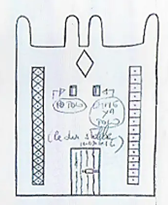
A “ginna” (extended patrilineal family dwelling) that architecturally represents the most striking part of the myth related to the descent of the ark and its stabilization. The facade displays two openings that clearly evoke the two invisible stars of the Sirius system (B and C). In addition to the complex symbolism present in the drawings of this facade, mentioned earlier, it is relevant to highlight that the representation of the two stars is intimately connected to the entire complex pattern of Dogon beliefs (as drawn in Le Renard Pale p. 437).
The description of the construction features of the sanctuary is followed by a reflection of extreme relevance: “Above the door facing east, two round openings are placed, one palm in diameter, the distance between the centre of the first circle and the second one cubit, are the holes of the sanctuary to see the Sun and Sirius through the two eyes, the hole on the right is the ‘seat’ of Sirius, the left hole is that of the Sun” (p. 36, text slightly reformulated in translation). It is crucial to remember that the simultaneous appearance of two stars on the horizon is an astronomically peculiar phenomenon, occurring under specific circumstances of the calendar, depending on the latitude of the location and the day of the year.
EXTRATERRESTRIAL VISITORS
Researchers claim that Dogon’s knowledge of the Sirius system, spanning thousands of years, may find support in historical facts.
There is speculation that the Mali tribe remotely descends from the Greeks who colonized the region of Africa that constitutes present-day Libya. The expatriate Greeks might have acquired knowledge from their neighbours, the ancient Egyptians.
The origin of the Dogons’ astronomical knowledge remains unclear. However, the African tribe explains its knowledge of the Sirius system simply: they state that their ancestors acquired this knowledge from extraterrestrial amphibious visitors called “Nommos,” originating from the star Po Tolo (Sirius B).
The Dogons report that the Nommos first arrived from the Sirius System in a rapidly spinning ship during descent, producing a sound as intense as the roar of the wind. They also describe the flying machine landing on the water, spreading the earth as if it were “spurting blood.” Some scholars suggest that, in the Dogon language, this resembles the “blast of a rocket.”
The Dogons also interpret this as the “mother ship” placed in orbit, something not so strange considering that the Apollo remained in lunar orbit while the module descended for the first moon landing in July 1969.
The Dogons believe that the gods (Nommos) came from a planet in the Sirius system five or six thousand years ago. In the Dogon language, “Nommos” means “associated with water… drinking the essential.”
According to the legend, the amphibious Nommos lived in the water, referred to by the Dogons as the “lords of the water.” Dogon art depicts them as part human, part reptile, similar to the amphibious demigod Oannes in Babylonian accounts and its Sumerian equivalent, Enki.
Religious records from various ancient civilizations mention the progenitors of their societies as beings originating from a place beyond Earth. This narrative is sometimes interpreted as evidence of extraterrestrial life that may have made contact with the planet in the distant past.
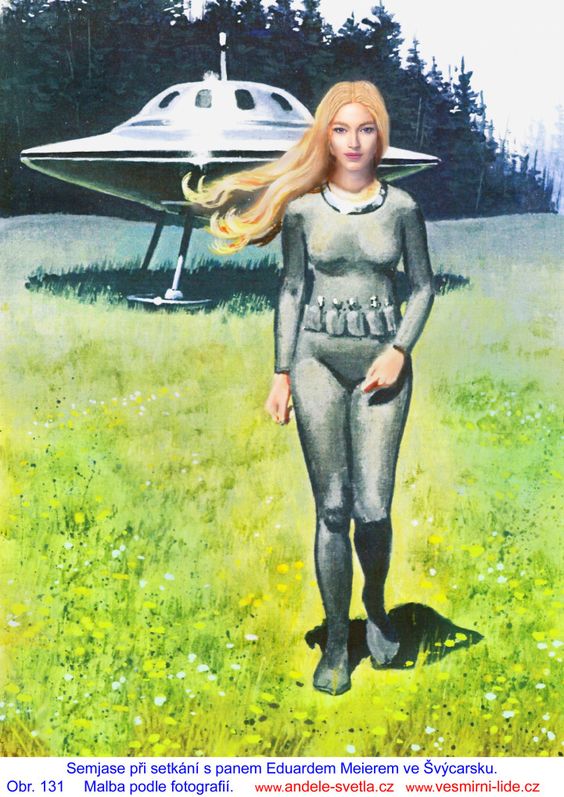
I recommend revisiting Dr. Kathy Forti’s article (https://trinfinity8.com/african-dogon-tribe-reveals-mans-true-origins/), written in English, for a more in-depth analysis of this topic.
In conclusion…
From the dawn of civilization to the present day, from distant tribes in Africa to the majestic capitals of the world, Sirius unfolds as the gift of life. In the tapestry of cultures, spanning ages and distances, the dog star dances, perpetually adorned with mysterious attributes. A subtle question arises: how can all these narratives intertwine with such harmony? Is there, perhaps, a common source, a shared mystery, weaving these myths about Sirius?
“As the inspiring guide of our endeavours, Fabiano de Cristo, would say:”
“Finally, a hidden weave between the evolution of the human being and the light of Sirius whispers that unveiling this secret is to reveal one of humanity’s great mysteries, a story intertwined with the longing of countless souls and spirits that danced through the stars until finding a home on Earth.
The synergies unfold in poetic splendor as we explore the tenets and symbolism of secret societies, which poetically weave a mystical connection with this unique celestial body. This connection is particularly revealed when, oh reader, you lift your gaze, and your heart pulsates, singing longing in front of the light that beckons us. Like a hopeful beacon, it guides us back to the safe haven after the storm of the earthly ocean.”
FC♰
“Peace and goodwill,”
Marcus Cesar Ferreira – MCF.
Work: INFINITE STARS (Ramaatís) – The Legacy of Universalist Spirituality [https://clubedeautores.com.br/livro/estrelas-infindas].

